#Huge Scorpion and Walking Mushroom Hot Pot
Text
Delicious in Dungeon in The Kitchen
So... I was struck by the thought that I kinda wish some food nerd would go through the Dungeon Meshi dishes and analyze them and sort of give a "this is the real world thing they're making" run down.
And then I realized I'm a food nerd that can do research.
So.
We're gonna try this out, starting with Volume 1. I don't promise that I know everything about cooking. I don't promise I'll always be able to make the thing I'm looking at (I am broke, and I don't have my own kitchen). But I can at least look at a dish and figure out what they're doing and how to replicate it, at least sorta.
Dungeon Meshi Volume 1-- Huge Scorpion and Walking Mushroom Hot Pot

The two main components of this dish are the Huge Scorpion and Walking Mushroom.
Walking Mushroom
Looking at the images in the manga, Walking Mushroom seems to just... be a mushroom that can walk around. There are no organs, the interior seems pretty uniform in substance...
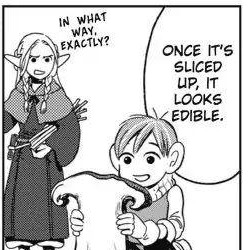
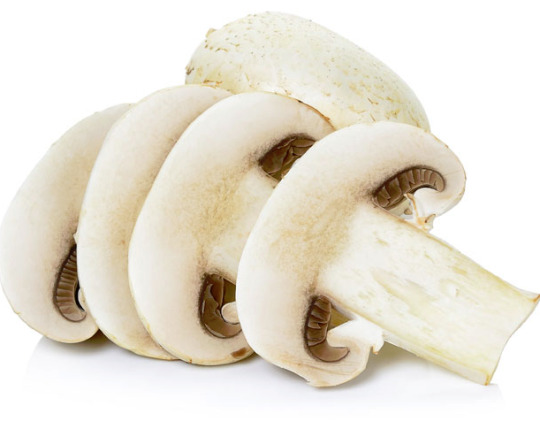
Like, literally, that's exactly what sliced mushrooms look like. Senshi cuts the mushroom into ~4" strips (judging by their size next to the small cabbage-like vegetable, and comparing those plants to his hand in the image of him gathering them. I am assuming dwarf hands are roughly the same size as human hands).
There's a variety of edible mushroom that is probably as close as we're going to get to the size of a Walking Mushroom, growing a cap up to 3' wide, but it seems to only grow in termite mounds in a very specific part of the African continent (please forgive my USAmerican, White education leading me to not being able to identify the specific region), so... if you can get that at all, it's probably crazy expensive (as it should be, unless you're literally getting it from the mounds or local markets yourself). Portobello or similar large culinary mushrooms are probably just fine. The Mushroom Feet are literally just mushrooms, so no worries there.
Huge Scorpion
Ok, so... there is a difference between arachnids and crustaceans. As a start, arachnids have book lungs and crustaceans have gills. Arachnid guts are different from crustacean guts, just because of environment. Hell, crustacean limbs grow differently from arachnid limbs.
That said, everything I see in Dungeon Meshi implies that, from a culinary standpoint, Huge Scorpion is a crustacean-
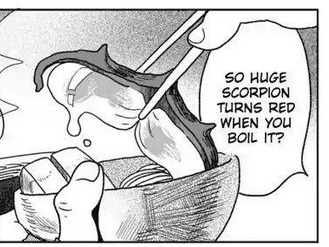

So, really, it's just a big lobster. Take a lobster, cut off its legs, antennae, and the tail fluke, and you're going to see something that looks pretty similar to the huge scorpion in Dungeon Meshi.
Seaweed
Next is seaweed, which... is just a thing, but also kind of an imprecise term, I think. Basically, "seaweed" just refers to any marine algae that is multicellular and macroscopic (big enough to see). Arctic Moss seems to be a real thing which refers to a couple things- the aquatic moss Calliergon giganteum and the terrestrial lichen in the genus of Cladonia, which includes Reindeer Lichen.
Reindeer lichen is edible, in a number of ways, but it's also not seaweed. So we look at Calliergon giganteum. I cannot get an answer as to whether this particular variety of moss is edible. So... fuck it, say Senshi used Reindeer Lichen, at least we know that's edible.
"Star Jelly" is... I don't know. The main result I find when googling it is that it's the sort of general term for various slimes that show up on lawns and other vegetation, etc. Which means it could be anything from amphibian spawning jelly to who the fuck knows what.
However, one thing it could be is a cyanobacteria known as Fat Choy, a commonly used "vegetable" in Chinese Cuisine:
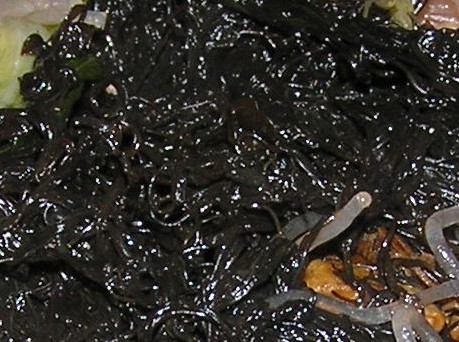
Looks like jelly? Yep. Looks weird enough that you might imagine it comes from a star? Yep. Edible? Yes!
(I mean, maybe don't eat a ton of it, or get it from irreputable sources. At least some Fat Choy contains a toxic amino acid which may or may not have negative health effects, but I'm not a doctor, so all I'm saying is "be aware of this." It's an expensive delicacy, which means that it is a particularly lucrative target for counterfeiters, and China does not have strong, or strongly enforced, food safety laws).
The Hard Stuff
So that leaves "Invertatoes" and "Dried Slime."
Neither of which seem to have a good direct analogue to the real world. Well... sorta.
Invertatoes seems to refer to the plants. The name calls to mind potatoes, and potatoes do indeed grow in the ground and are starchy. It's probably fair to just use any kind of starchy tuber as the "invertatoes." Maybe cassava, since those are large enough that it's at least somewhat believable that "Fantasy Land Cassava" could look like that (although that doesn't fit the "these are normal plants that grow upside down" unless we're being really generous).
The problem is that it's sort of implied that the cabbage-like vegetable seen in the hot pot comes from the same plant, and everything from a potato plant other than the potato itself is toxic. They also don't look like that.
I literally don't know what those cabbage/lettuce-like leafy vegetables are. They're not seaweed, because the two varieties called out definitely don't look like that. They're not, so far as I can tell, the greens of any kind of starchy tuber--
EXCEPT.
So, I was taking one last look at tubers to see if I could find something that seemed to match, and I think Invertatoes could be likened to something similar to chicory. Particularly endives. I never knew endives were related to chicory (ie, "that thing that I'm aware is popular as a coffee substitute in the South, but I don't have much desire to try it, and I wonder if it even has caffeine..."), but, apparently, yeah. Endives are a member of the chicory genus.
So, yeah, lets say that Invertatoes are a sort of fantasy plant similar to the various members of the chicory genus. The trunk can be replicated with chicory root, and the leaves with endives.
That leaves Dried Slime. Dried Slime makes up the noodles in the hot pot, which implies that the noodles are gelatinous, and probably low in gluten. Senshi's explanation of the slime makes me want to think of it as a macro-unicellular lifeform, but... I'm not sure that's accurate.
While it's definitely not an accurate way to describe a jellyfish, I could definitely see a non-biologist describing jellyfish in a way similar to the way Senshi describes the slime. I could also see some fantasy terrestrial jellyfish thing hunting in a similar manner to the slime. Moreover, there are edible varieties of jellyfish, and they're processed in a manner very similar to what Senshi describes for processing slimes. And one way of preparing edible jellyfish is to thinly slice it into noodles.
Hot Pots
I... think this is using a very specifically Japanese sense of "hot pot" (which makes sense), because in Japan, hot pot can refer to a dish called nabemono, while in general, hot pot refers to a particular kind of dining in China where you get a pot full of boiling stock/broth and a bunch of raw ingredients, and you put the stuff you want into the broth at the table. Nabemono is more of "put a bunch of stuff in a pot, and cook it. Serve it boiling." Which is to say, it's soup.
Senshi puts the scorpion meat and mushroom into a pot on its own, and lets it start boiling-

Then, while it's boiling, he goes and finds other ingredients, coming back with the invertatoes and the slime. The two are prepared simply-
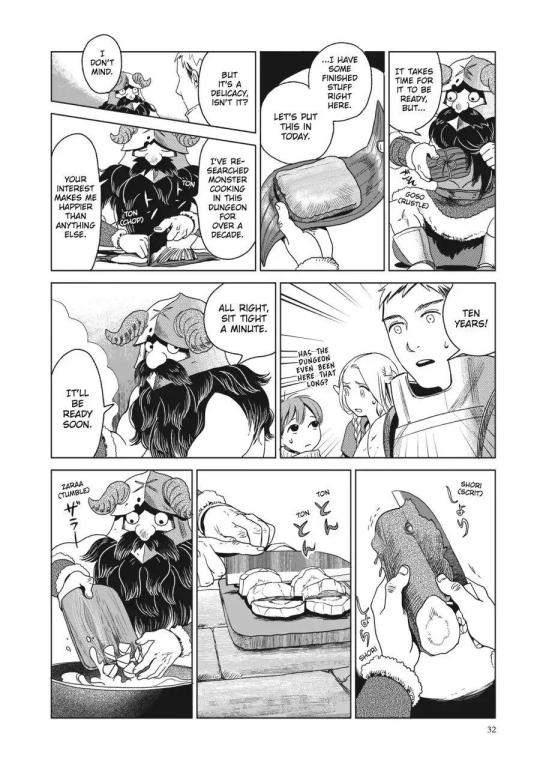
Seasoning isn't included in the ingredients, but I can understand this as a choice for presentation. We do see Senshi add something to the broth after tasting it, and I think it's fair to assume it's one of soy sauce, mirin, fish sauce, or similar. I think it's actually really interesting that we see Senshi add seasoning, but we're not told what it is-

Because... that's cooking. You can follow a recipe, but ultimately, you need to taste your cooking and make your own decisions. Senshi lets the soup cook, tastes the broth, decides it needs something, and gives it a bit of time to let the flavors meld before serving it up.
Dungeon Meshi Lobster and Mushroom Hot Pot
So, we're looking at something like this for the "Huge Scorpion and Walking Mushroom Hot Pot"--
Lobster- ~5 lbs or more (a 1 lb lobster yields about 4 oz of actual meat, which is a single serving), cut into large slices
Portobello- 2 mushrooms large diced, 2 left whole with the caps scored
Reindeer Lichen and Fat Choy- to taste
Chicory Roots- ~1 cup, diced
Endive greens- ~2 cups
Jellyfish, thin sliced- as much as you like
Add lobster and mushrooms to water, and allow to boil. While it comes to a boil, prepare the other ingredients, then add to the water. Let the soup come to a full boil, then reduce heat and simmer for 15 minutes to an hour (can simmer longer, but this will affect the texture of the ingredients. Longer simmering will result in more melding of flavors, but also degraded solid parts).
Taste the broth. It will likely need salt and acid, which could come in a variety of forms, such as kosher salt and lemon juice, soy sauce and mirin/rice vinegar, oyster/fish sauce, or something else. Go with your gut and your taste buds..
#Dungeon Meshi#Defictionalization#Cooking#Food#Huge Scorpion and Walking Mushroom Hot Pot#Lobster and Portobello Hot Pot#This actually isn't really my thing due to the mushrooms but hell#Cashapp: $ValravenApocalypse#Paypal.me/Korbl#Ko-fi.com/valravenapocalypse#If this gets 100 notes and people like it I'll do the carnivorous plant fruit tart#Delicious in Dungeon
94 notes
·
View notes
Text


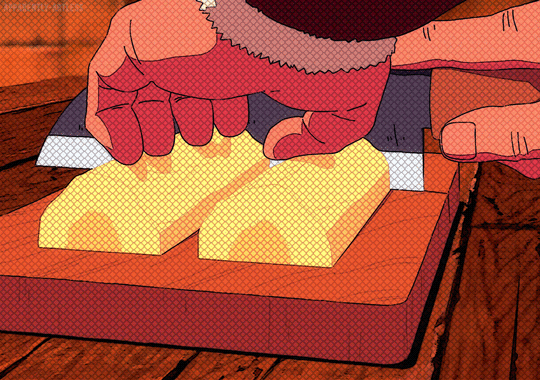

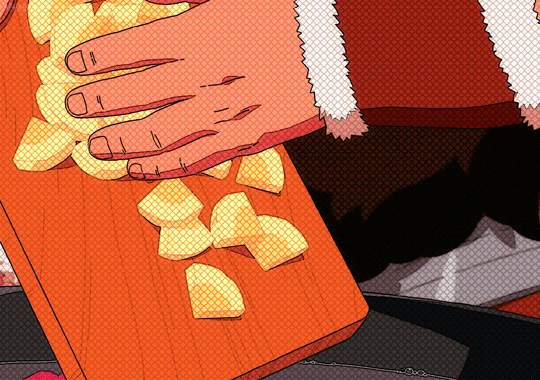
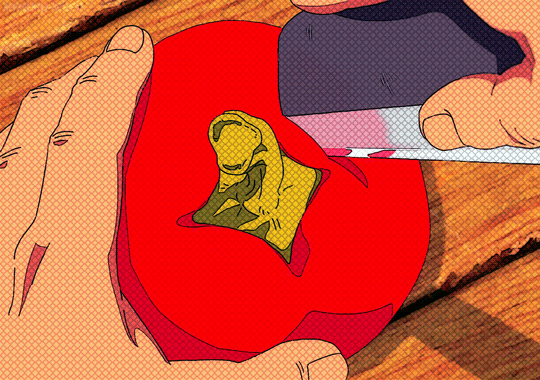




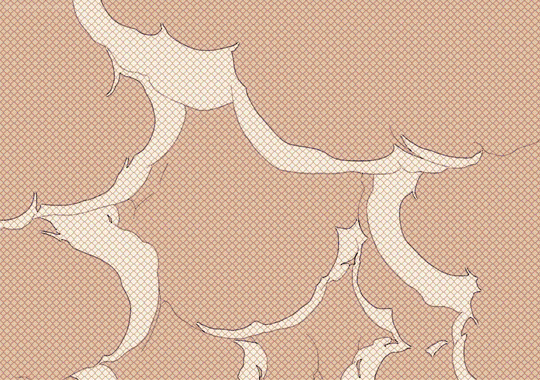

dungeon meshi e01:
huge scorpion and walking mushroom hot pot || man-eating plant tart
#dungeon meshi#delicious in dungeon#dungeonmeshiedit#animeedit#anime gif#fyanimegifs#dailyanimatedgifs#animangafood#dailyanime#anisource#anime food#food anime#himawaari#userinahochi#usertorichi#userdabiluna#usergojoana#useradrienne#tuserelena#artsgifs#tw eyestrain#if it's food i can tag everyone right?? XD
1K notes
·
View notes
Text

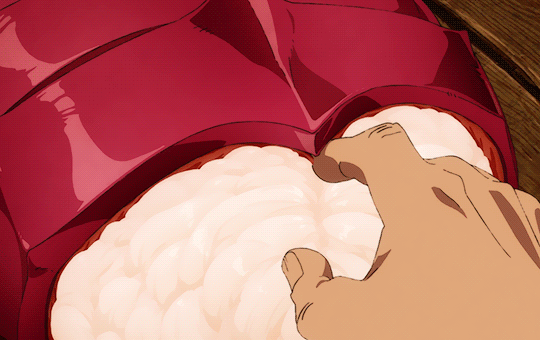
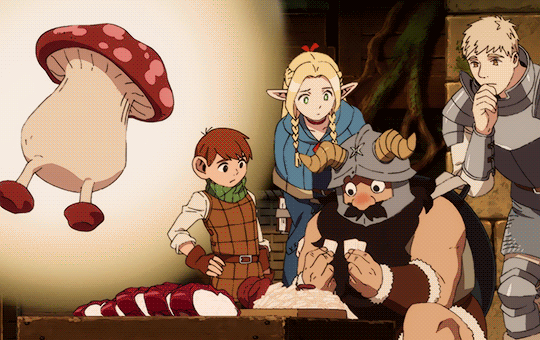


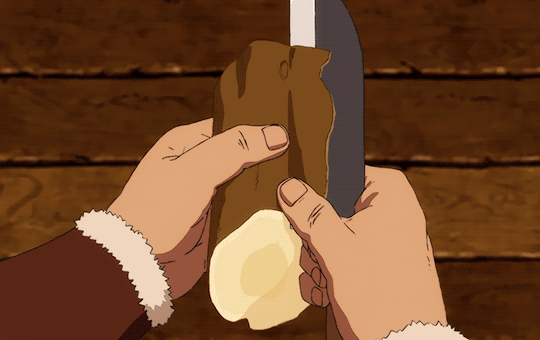
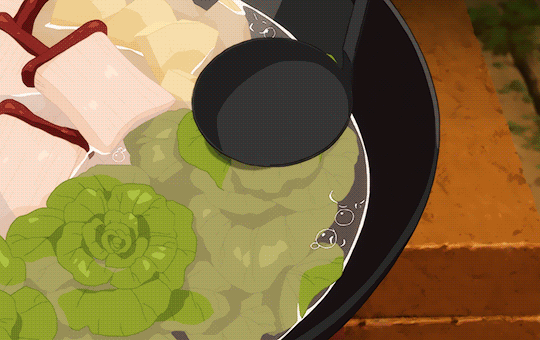

dungeon meshi recipes ★
huge scorpion and walking mushroom hot pot
#dunmeshiedit#dungeonmeshiedit#fyanimegifs#animangahive#himawaari#userartless#usersenka#usergojoana#usernikiforova#userjenny#userokkottsus#useralphonse#userroh#usermoh#dunmeshi#dungeon meshi#delicious in dungeon#*dunmeshirecipes#*dunmeshi#*gif#does the colouring look too dark? i wanted to make it a bit brighter but the export looked bad :(#food cw#queue
529 notes
·
View notes
Text
Dungeon Menu: March 16


Huge Scorpion and Walking Mushroom Hot Pot and Man-Eating Plant Tart
51 notes
·
View notes
Text


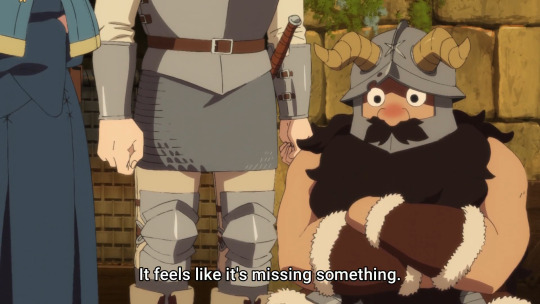




Huge scorpion + walking mushroom hot pot / Dungeon Meshi S1E1
#senshi#i've never seen someone so good at cooking monsters#marcille donato#anime food#dungeon meshi#delicious in dungeon#hot pot
29 notes
·
View notes
Text
Marcille: I'm never gonna get used to living like this. Huge scorpion and walking mushroom hot pot? Mandrake and basilisk omurice? Roasted basilisk?
Senshi: If you don't like that, try some man-eating plant tart.
#dungeon meshi#dunmeshi#delicious in dungeon#incorrect dungeon meshi#incorrect dunmeshi#incorrect delicious in dungeon#marcille#marcille donato#senshi#Source: Futurama#i really want to try their food#and maybe make some real world equivalents
9 notes
·
View notes
Text
Reading Dungeon Meshi, Chapter 1: Hot Pot

Dungeon Meshi by Ryoko Kui is my favorite current seinen series, and a close second to all-time favorite Lone Wolf and Cub. I’m a shameless sucker for your standard-issue dungeon-delving fantasy adventure, and I like to see a good smart twist on the genre. Dungeon Meshi (literally “Dungeon Meal,” published in English as Delicious in Dungeon) gathers up a bushel of the old, comfortable, familiar cliches, brushes off the dust, gives them a squeeze, and weaves them together with elegant art, a warm sense of humor, and an endearing cast. The premise might smell funny at first, but if you learn anything from this series, it’s that you can cook up something astonishing from the most unlikely ingredients.
Synopsis
It all begins in a small island village…
Mysterious moans from a mausoleum. The revelation of a “golden kingdom” buried beneath the earth by a mad magician. The promise of a dying king that whoever defeats said magician will inherit the title to that lost and fabulous realm. Adventurers flock to the island, and numberless stories are born.

In the depths of the dungeon a band of bold comrades face down a red dragon. A daunting challenge, but they have courage, brains, teamwork – and empty stomachs. Laios (human, male), frontline fighter and de facto leader, sees how hunger and fatigue have crippled the party’s performance. Distracted by his thoughts, he is nearly snapped up by the dragon, and is only saved when his sister Falin, the party cleric, shoves him out of the way, only to find herself in the dragon’s jaws. With her dying breath, Falin casts a spell, and the party is transported to the surface, leaving her behind to be devoured.

Laios wants to go back into the dungeon at once, knowing that if the dragon is slain and Falin’s remains are recovered, there’s a chance she can be resurrected. But the party is penniless, poorly equipped, and down three members — Falin, and two others who quit upon returning to the surface. Only Chilchuck the halfling locksmith, Marcille the elven mage, and Laios himself remain. Rebuilding the party and refreshing their supplies would take precious time; if Falin is to be revived, they must recover her remains before she is digested. So, in spite of their strapped conditions, Laios is determined to return to the dungeon immediately, and Marcille and Chilchuck agree to go with him – Marcille because of her friendship with Falin, Chilchuck out of professional pride. But how will they survive without provisions?
By eating the monsters of course!
This is Laios’s big idea, born of his otaku-like obsession with the biology of monsters and the ecosystem of dungeons. Chilchuck and Marcille are, understandably, initially averse, and Marcille’s disgust is especially emphatic (and hilarious). But they follow Laios long enough to catch and kill a walking mushroom and a huge scorpion, whereupon he embarks on the experiment of converting foes into food.

At this point they are joined by Senshi, a reclusive and eccentric dwarf with a passion for monster cuisine. Noticing Laios’s amateurish attempts, Senshi offers his own cookware and expertise, revealing that he himself has been eating the monsters of the dungeon for more than ten years! With his assistance (and after surviving a surprise attack from a ceiling-dwelling slime), they prepare the dish of the day: huge scorpion and walking mushroom hot pot.

The result, of course, is delicious. Even Marcille has her green-eggs-and-ham come-to-Senshi moment, and discovers the joy of a dungeon meal. Basking in the glow of good food and good company, the party shares their quest with Senshi, who volunteers to join them. After all, cooking dragon has been his lifelong dream…
Thoughts
From page one, this story lured me in with the promise of the chthonic – the dark, the strange, the labyrinthine, the subterranean, the hidden depths beneath our feet and beyond our thought, concealing ancient secrets. Lost kingdoms, mad magicians, unknown terrors, fabulous rewards? Yes please! Dungeon delving at its finest. Really, I’ll take any excuse to delve. Dungeons deep, caverns old, hollow halls beneath the fells – I’ll delve ‘em. My name’s from the Greek georgos, meaning farmer or earth-worker; ge-, earth, -érgon, work. I’m no farmer, and not much of a gardener, but I do love a good dig. (Remember Jurassic Park? “Because Grant is like me — he’s a digger.”) Dungeon Meshi accomplishes something truly alchemical, deftly mixing the two souls of the dig — the deep wonder and terror of exploring the underworld, and the humble, hearty, earthy necessities of farming, food, and even waste management (we’ll get to that.) So pick up your spade; there’s horrors to be unearthed.
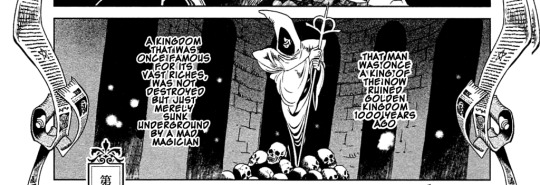
What struck me next was the fallibility and fragility of our heroes. They might conquer demons and dragons, nightmares and sorceries, and yet be undone by mere hunger, by forgetting the limits of their own frail, mortal bodies. Heroes are not invincible gods who breeze through adventures without so much as a bathroom break. They are made of the same stuff as you and I. They need to rest, they need to think, and they need to eat. If you want to survive, much less triumph, you must have the humility to acknowledge the weakness of the flesh. Otherwise, well…it’s eat or be eaten.

So the situation’s grim, but the dark tone is leavened by the charm and the sweet good humor of the cast. Many a seinen series (and much modern fiction) thrusts the reader into a nasty world full of equally nasty people, with no clear heroes and nobody worth rooting for. In Dungeon Meshi, Ryoko Kui has given us one of the most lovable adventuring parties in manga. Laios is the clear-eyed, high-hearted, naive idealist, all smiles and boyish enthusiasm, a pillar of strength and quick wits in a pinch, maddeningly inept at reading people and social situations; in short, a paladin, and a true hero. Marcille is the scholar (and sometimes the schoolgirl), elegant yet practical, at turns bashful and fierce, frequently the voice of reason, occasionally the font of madness, sometimes vain, always courageous, and probably the most dangerous of the bunch. Chilchuck is the straight man, the dad, the long-suffering professional beset by incompetents, a man who understands the value of things, not least his own skills, and is frequently pained by the churlish carelessness of his bumbling companions. Senshi is the sage, the wise fool, the half-wild hermit, a beautiful, burly bear of a man, firmly rooted in the earth, almost an elemental spirit of the dungeon itself – and deeply caring.

Finally, it’s gladdening to read a story in which the communal meal takes center stage. Whatever they suffer, and however they bicker, the party always comes together around the fire to break bread and make peace. Eating isn’t just something they do; it’s the heart of the quest, the reward of their labors, the bodily affirmation of their covenant as comrades. At the end of the day, a good dinner together is the highest adventure.
Dungeon Meshi (Delicious in Dungeon) is being published in North American through Yen Press.
7 notes
·
View notes